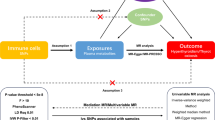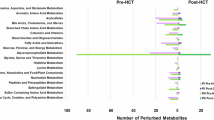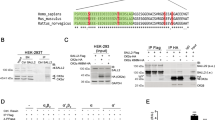Abstract
Salusin-α and salusin-β are multifunctional bioactive peptides with hypotensive and bradycardic effects. They were originally identified from full-length human cDNAs by bioinformatics analyses. Salusin peptides are expressed in human tissues at the mRNA level, but no information is available about their systemic distributions in any species. We examined the distributions of preprosalusin mRNA and the salusin peptides in a variety of normal rat organs. Whereas preprosalusin mRNA was expressed ubiquitously, immunoreactive salusin-β was detected most strongly in the hypothalamus and posterior pituitary, and less abundantly in the anterior pituitary and gastrointestinal, immune, and hematopoietic systems. Salusin-β−positive cells appeared to be of either hematopoietic or endocrine origin, and many hematopoietic cells were also stained with anti-CD68, which specifically recognizes macrophages. Salusin-α−like immunoreactivity was not detected in any of the rat tissues. These results indicate that rat salusin is immunologically similar to human salusin-β and widely expressed, especially in the immune, gastrointestinal, and central nervous systems and mainly in endocrine- and hematopoietic-derived cells.
Similar content being viewed by others
Article PDF
References
Shichiri M, Ishimaru S, Ota T, Nishikawa T, Isogai T, Hirata Y : Salusins: newly identified bioactive peptides with hemodynamic and mitogenic activities. Nat Med 2003; 9: 1166–1172.
Izumiyama H, Tanaka H, Egi K, Sunamori M, Hirata Y, Shichiri M : Synthetic salusins as cardiac depressors in rat. Hypertension 2005; 45: 419–425.
Yu F, Zhao J, Yang J, et al: Salusins promote cardiomyocyte growth but does not affect cardiac function in rats. Regul Pept 2004; 122: 191–197.
Xiao-Hong Y, Li L, Yan-Xia P, et al: Salusins protect neonatal rat cardiomyocytes from serum deprivation-induced cell death through upregulation of GRP78. J Cardiovasc Pharmacol 2006; 48: 41–46.
Wang Z, Takahashi T, Saito Y, et al: Salusin beta is a surrogate ligand of the mas-like G protein–coupled receptor MrgA1. Eur J Pharmacol 2006; 539: 145–150.
Takenoya F, Hori T, Kageyama H, et al: Coexistence of salusin and vasopressin in the rat hypothalamo-hypophyseal system. Neurosci Lett 2005; 385: 110–113.
Yoshimoto T, Gochou N, Fukai N, Sugiyama T, Shichiri M, Hirata Y : Adrenomedullin inhibits angiotensin II–induced oxidative stress and gene expression in rat endothelial cells. Hypertens Res 2005; 28: 165–172.
Damoiseaux JG, Dopp EA, Calame W, Chao D, MacPherson GG, Dijkstra CD : Rat macrophage lysosomal membrane antigen recognized by monoclonal antibody ED1. Immunology 1994; 83: 140–147.
Dijkstra CD, Dopp EA, Joling P, Kraal G : The heterogeneity of mononuclear phagocytes in lymphoid organs: distinct macrophage subpopulations in the rat recognized by monoclonal antibodies ED1, ED2 and ED3. Immunology 1985; 54: 589–599.
Sato K, Koyama T, Tateno T, Hirata Y, Shichiri M : Presence of immunoreactive salusin-alpha in human serum and urine. Peptides 2006; 27: 2561–2566.
Author information
Authors and Affiliations
Corresponding author
Rights and permissions
About this article
Cite this article
Suzuki, N., Shichiri, M., Akashi, T. et al. Systemic Distribution of Salusin Expression in the Rat. Hypertens Res 30, 1255–1262 (2007). https://doi.org/10.1291/hypres.30.1255
Received:
Accepted:
Issue date:
DOI: https://doi.org/10.1291/hypres.30.1255
Keywords
This article is cited by
-
A trans fatty acid substitute enhanced development of liver proliferative lesions induced in mice by feeding a choline-deficient, methionine-lowered, L-amino acid-defined, high-fat diet
Lipids in Health and Disease (2020)
-
Identification and quantification of plasma free salusin-β, an endogenous parasympathomimetic peptide
Scientific Reports (2017)
-
Silencing salusin-β attenuates cardiovascular remodeling and hypertension in spontaneously hypertensive rats
Scientific Reports (2017)
-
Salusin-β contributes to oxidative stress and inflammation in diabetic cardiomyopathy
Cell Death & Disease (2017)
-
Salusin-β as a powerful endogenous antidipsogenic neuropeptide
Scientific Reports (2016)



